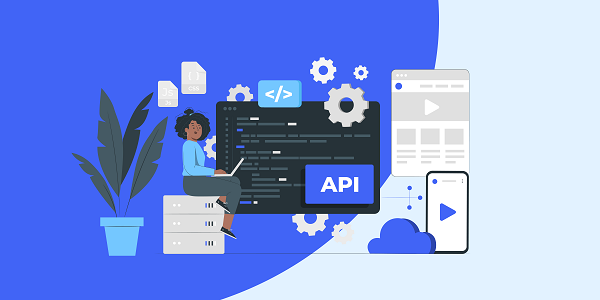Residential Proxies
Allowlisted 200M+ IPs from real ISP. Managed/obtained proxies via dashboard.

Proxies
Residential Proxies
Allowlisted 200M+ IPs from real ISP. Managed/obtained proxies via dashboard.
Residential (Socks5) Proxies
Over 200 million real IPs in 190+ locations,
Unlimited Residential Proxies
Use stable, fast, and furious 700K+ datacenter IPs worldwide.
Static Residential proxies
Long-lasting dedicated proxy, non-rotating residential proxy
Dedicated Datacenter Proxies
Use stable, fast, and furious 700K+ datacenter IPs worldwide.
Mobile Proxies
Dive into a 10M+ ethically-sourced mobile lP pool with 160+ locations and 700+ ASNs.

Web Unblocker
View content as a real user with the help of ABC proxy's dynamic fingerprinting technology.
Proxies
API
Proxy list is generated through an API link and applied to compatible programs after whitelist IP authorization
User+Pass Auth
Create credential freely and use rotating proxies on any device or software without allowlisting IP
Proxy Manager
Manage all proxies using APM interface

Proxies
Residential Proxies
Allowlisted 200M+ IPs from real ISP. Managed/obtained proxies via dashboard.
Starts from
$0.77/ GB
Residential (Socks5) Proxies
Over 200 million real IPs in 190+ locations,
Starts from
$0.045/ IP
Unlimited Residential Proxies
Use stable, fast, and furious 700K+ datacenter IPs worldwide.
Starts from
$79/ Day
Rotating ISP Proxies
ABCProxy's Rotating ISP Proxies guarantee long session time.
Starts from
$0.77/ GB
Static Residential proxies
Long-lasting dedicated proxy, non-rotating residential proxy
Starts from
$5/MONTH
Dedicated Datacenter Proxies
Use stable, fast, and furious 700K+ datacenter IPs worldwide.
Starts from
$4.5/MONTH
Mobile Proxies
Allowlisted 200M+ IPs from real ISP. Managed/obtained proxies via dashboard.
Starts from
$1.2/ GB
Knowledge Base
English
繁體中文
Русский
Indonesia
Português
Español
بالعربية


This article systematically analyzes the technical architecture and calling strategy of Google Trends Data API, explores its business intelligence value and key issues in development practice, and proposes an optimization solution for large-scale data collection in combination with abcproxy proxy service.
1. Technical Definition of Google Trends Data API
Google Trends Data API (unofficial interface) is a structured data interface for obtaining Google Trends service through reverse engineering, which supports extracting search popularity index by keyword, region, and time dimension. Its core capabilities include three modules: real-time hot spot tracking, competitive product comparison analysis, and regional interest map construction. abcproxy's dynamic residential proxy service can break through the API call frequency limit and realize parallel data collection in multiple regions.
2. Technical Implementation Path of API Call
2.1 Authentication and Authorization Mechanism
Simulate browser fingerprint to bypass verification (User-proxy/Cookie rotation)
Obtain the official API token through OAuth 2.0 (corporate account qualifications required)
Configure abcproxy proxy pool to avoid IP blocking (recommended 5 minutes/time IP rotation)
2.2 Query parameter design
Time range (supports real-time/hourly/yearly/monthly granularity)
Geolocation (code mapping to country/city/zip level)
Keyword combination (single keyword monitoring vs multiple keywords comparison)
2.3 Data format processing
JSON/CSV dual format output adapts to different application scenarios
Normalization (0-100 thermal value benchmark calibration)
Time zone conversion (UTC timestamp to local time mapping)
3. Five core scenarios of API application
Market trend forecast
Analyze the change rate of industry keyword search volume (3-month moving average) and predict the turning point of product demand cycle. For example, predict retail inventory demand 2 weeks in advance through the search peak of "outdoor equipment".
Competitive product public opinion monitoring
Build a combination matrix of brand words and competitor words (such as "iPhone 15" vs "Samsung S24"), calculate the relative search share changes, and identify the effectiveness of marketing activities.
Regional operation decision
Optimize offline store location selection by using city-level popularity differences, for example, comparing the search density differences for "coffee takeout" in Chaoyang District and Haidian District in Beijing.
Content creation optimization
Extract long-tail keyword association maps (such as "data analysis", "machine learning" and other derivative words associated with "Python tutorial") to guide article selection and SEO strategies.
Investment signal capture
Monitor the surge in searches for financial product-related terms (such as the combination of "gold ETF" + "inflation") to assist in adjusting the parameters of quantitative trading models.
4. Three major technical limitations of API use and their solutions
Data granularity restrictions
Problem: The minimum time unit is hourly, and it is impossible to obtain minute-level real-time data.
Solution: Cross-validation with social media data sources such as Twitter API
Regional coverage deviation
Problem: Insufficient data sampling in some developing countries (such as African countries)
Solution: Use abcproxy proxy IP to simulate local user search behavior to supplement data
Keyword fuzzy matching
Problem: Automatically merge semantically similar words (e.g. "AI" and "artificial intelligence")
Solution: Add a list of exclusion words ("-artificial intelligence") to force data splitting
5. Developers’ Optimization Methodology
Intelligent parameter configuration
High-frequency word monitoring: set 5-minute interval + city-level geographic accuracy
Long-term analysis: monthly aggregation + provincial geographic accuracy
Sensitive word collection: Enable abcproxy residential proxy + random UA generation
Architecture design principles
Distributed collection: Dispatching proxy IP resources by region
Resume download: record the timestamp of the last successful request
Data verification: Detect abnormal values (if the daily fluctuation is greater than 300%, manual review is required)
Compliance Strategy
Comply with Google's Terms of Service (recommended QPS ≤ 1 time/second)
Set a daily request limit for a single IP (recommended ≤ 500 times/IP)
Traffic decentralization through abcproxy proxy pool
6. Key Decisions for Enterprise-Level Implementation
Data governance system
Raw data storage: Choose a time series database (such as InfluxDB)
Metadata management: record IP proxy usage logs and API call traceability
Data desensitization: Encrypted storage of sensitive fields containing geographic location information
proxy Resource Management
Assign proxy type based on task type:
High-frequency tasks → Data center proxy (low cost)
Precise positioning → Static ISP proxy (high stability)
Compliance sensitive → Residential proxy (strong anonymity)
Cost Control Model
Calculate the unit data acquisition cost (IP fee + API call cost)
Dynamically adjust the usage ratio of proxy IP and official API
Set up an automatic fuse mechanism (suspend collection when the daily cost exceeds the budget by 80%)
As a professional proxy IP service provider, abcproxy provides a variety of products such as dynamic residential proxy and static ISP proxy, which can effectively support the large-scale call requirements of Google Trends data API. Visit the official website to obtain customized data collection solutions.
Featured Posts
Popular Products
Residential Proxies
Allowlisted 200M+ IPs from real ISP. Managed/obtained proxies via dashboard.
Residential (Socks5) Proxies
Over 200 million real IPs in 190+ locations,
Unlimited Residential Proxies
Use stable, fast, and furious 700K+ datacenter IPs worldwide.
Rotating ISP Proxies
ABCProxy's Rotating ISP Proxies guarantee long session time.
Residential (Socks5) Proxies
Long-lasting dedicated proxy, non-rotating residential proxy
Dedicated Datacenter Proxies
Use stable, fast, and furious 700K+ datacenter IPs worldwide.
Web Unblocker
View content as a real user with the help of ABC proxy's dynamic fingerprinting technology.
Related articles

Why do you need a dedicated proxy IP to buy shoes on SNKRS
This article analyzes the core role of dedicated proxy IP in SNKRS snap-ups, explores how to improve the success rate through proxy IP technology, and introduces how abcproxy provides professional solutions for sneaker enthusiasts.

How to bypass now.gg restrictions
This article explores the core methods of bypassing now.gg restrictions, analyzes the role of proxy IP technology, and explains how abcproxy's residential proxy, static ISP proxy and other products can help users achieve their goals efficiently.